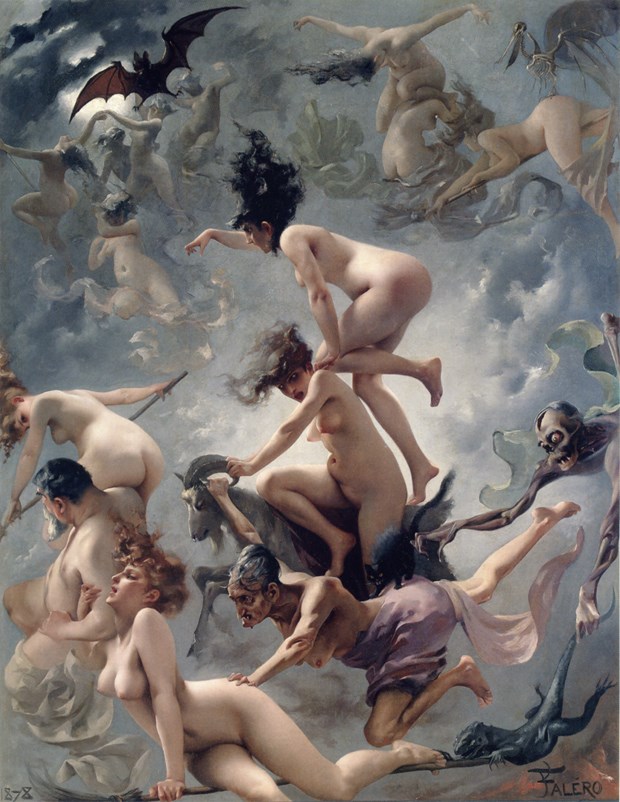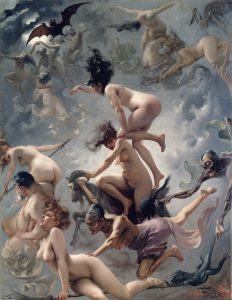Literary Hub ran a piece looking at the depiction of witches in literature going back to Antiquity. The piece starts:
“As far as popular fascinations go, few have endured for as long, or created as robust a bibliography, as witches. While the word “witch” has its etymological roots (wicce) in Old English, the concept has antecedents much older and geographically widespread. Written accounts of women who practice magic are as old as recorded history and are still popular today. And while there is a broad spectrum of witch stories out there, there is a through-line to them all: witches are women whose embodiment of femininity in some way transgresses society’s accepted boundaries—they are too old, too powerful, too sexually aggressive, too vain, too undesirable. In the name of Halloween (and spooking the pants off the patriarchy), let us now look at some of literature’s most significant witches.
“Hecate, 7th Century B.C.E.
The only daughter of Titans Perseus and Asteria, Hecate was a goddess of Greek mythology with a particularly large wheelhouse, associated variably with magic, witchcraft, the night, the moon, ghosts, and necromancy, as well as lighter fare like athletic games, courts of law, birth, and cattle-tending. In later periods she was often depicted in triple form, in connection with the phases of the moon. Hecate plays a crucial role in the myth of Persephone’s abduction by Hades; the only witness to the kidnapping besides Helios, she uses her iconographic torch to help Demeter scour the Earth for her lost daughter. Hecate also appears in Ovid’s Metamorphoses and is identified in Hesiod’s Theogony as the goddess Zeus valued above all others. The Orphic Hymns describe Hecate as she has come to be most known in the popular imagination: “Sepulchral, in a saffron veil array’d, leas’d with dark ghosts that wander thro’ the shade.”
“Morgan le Fay, 1150
First referenced in Geoffrey of Monmouth’s Vita Merlini, Morgan le Fay was an enchantress-cum-antagonist of Arthurian Legend whose name has been rendered in so many different spellings that it practically constitutes an act of witchcraft in itself. Similarly to Hecate, Morgan le Fay’s narrative took on darkness over time. Portrayed as a healer in the early chivalric romances of Monmouth and Chrétien de Troyes, she appears in the later medieval stories as the half-sister and bitter adversary of King Arthur, plotter against Excalibur, apprentice of Merlin, and sexually menacing temptress whose obsessive love for Lancelot goes unrequited. Yet even at her most unequivocally villainous, it is Morgan le Fay who bears an injured Arthur to the island of Avalon after he is wounded in the Battle of Camlann.
“Malleus Maleficarum, 1487
Often translated as Hammer of the Witches, the Malleus Maleficarum was a manifesto by German Catholic clergyman Heinrich Kramer written in defense of the prosecution of witches. Three years before its publication, Kramer had been expelled from Innsbruck for eccentric behaviors related to his attempts at prosecuting witchcraft—and for assuming the authority of an Inquisitor, which he was not. The Malleus Maleficarum set out to refute arguments against the existence of witchcraft and discredit its skeptics; it also asserted those who practiced it were more often women than men. While the Catholic Church officially condemned the Malleus Maleficarum in 1490, it became an important text during the brutal witch trials of the 16th and 17th centuries.
“The Weird Sisters, 1611
Referred to as the “weyward sisters” in Macbeth’s first folio, this trio of witches delivers the dual prophecies that set the entire play’s course of events into motion: that the eponymous Scottish general will become king, while his companion, Banquo, will generate a line of kings. The Weird Sisters as described by Shakespeare are not only hag-like—with “chappy fingers” and “skinny lips”—but masculine as well, having beards. This latter characteristic connects them to Macbeth’s other villainous female figure: Lady Macbeth, who entreats the spirits to “unsex [her] here” while plotting the murder of King Duncan. In a disputed scene in the play’s third act, the Weird Sisters reappear with O.G. Hecate, who chastises them for meddling in Macbeth’s future without her. During their last appearance in act 4, the witches conjure a series of ominous visions for the now-king Macbeth that foreshadow his imminent fall.”
Read the full piece:


